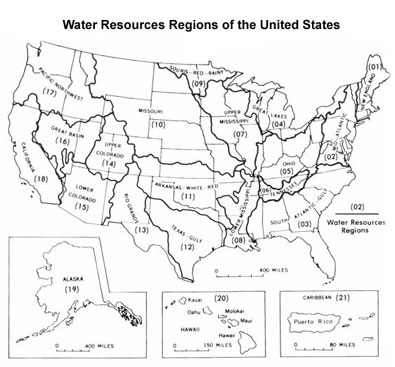 |
This summary is published as USGS Fact Sheet 2015-3026 and can be downloaded as a PDF file
Streamflow of 2014 - Water Year Summary
U.S. Geological Survey
Reston, Virginia
January 2015
IntroductionThe maps and graphs in this summary describe
streamflow conditions for water-year 2014 (October 1, 2013 to September 30,
2014) in the context of the 85-year period 1930-2014, unless otherwise noted.
The illustrations are based on observed data from the U.S. Geological
Survey's (USGS) National Streamflow Information Program (http://water.usgs.gov/nsip). The period 1930-2014
was used because prior to 1930, the number of streamgages was too small to
provide representative data for computing statistics for most regions of the
country. |
|
National Overview
Regional Patterns
Seasonal Characteristics
High and Low Flows
Additional Information
The USGS operates a network of 8,124 streamgages nationwide, almost in real-time. Current information derived from these stations is available on the web at http://waterwatch.usgs.gov. Tables of data that summarize historical streamflow conditions by State, beginning in the year 1900, can be accessed at http://waterwatch.usgs.gov/?m=statesum. These tables are updated every few months to reflect the most current streamflow data. The streamflow information used to prepare this summary is also used
for water management, monitoring floods and droughts, bridge design,
and for many recreational activities. To obtain real-time and archived
streamflow data and information, visit http://water.usgs.gov/nwis.
Although the national streamgage network is operated primarily by
the USGS, it is funded by a partnership of 850 agencies at the Federal,
State, tribal, and local levels, and USGS National Streamflow Information Program
(http://water.usgs.gov/nsip/) and the USGS Cooperative Water
|
||||
| Accessibility FOIA Privacy Policies and Notices | ||
| U.S. Department of the Interior | U.S. Geological Survey URL: http://water.usgs.gov/waterwatch/ Page Contact Information: Office of Surface Water. |
|
 |
